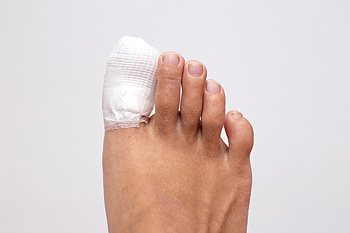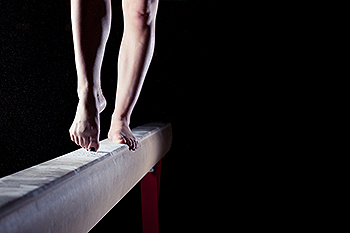Connect With Us
Blog
Items filtered by date: October 2022
Athlete’s Foot and Work Boots

Athlete’s foot is a pesky affliction of the foot spread by a fungus that may create a rash on your feet. If you wear work boots for your job all day, it is important to know that the fungus causing this infection can fester inside of your work boots. To prevent this from happening, you might consider alternating between different pairs of work boots from day to day. This is ultimately done to keep your work boots dry because when the boots are damp, this facilitates the growth of the fungus. Additionally, you may choose to wear work boots that provide some breathability for your feet in order to minimize the extent to which your feet are sweating and creating moisture. This same method also applies to socks that are worn. If you wear work boots throughout the workday, contact a podiatrist today for more tips and tricks.
Athlete’s foot is an inconvenient condition that can be easily reduced with the proper treatment. If you have any concerns about your feet and ankles, contact one of our podiatrists from Nassau Foot & Ankle. Our doctors will treat your foot and ankle needs.
Athlete’s Foot: The Sole Story
Athlete's foot, also known as tinea pedis, can be an extremely contagious foot infection. It is commonly contracted in public changing areas and bathrooms, dormitory style living quarters, around locker rooms and public swimming pools, or anywhere your feet often come into contact with other people.
Solutions to Combat Athlete’s Foot
- Hydrate your feet by using lotion
- Exfoliate
- Buff off nails
- Use of anti-fungal products
- Examine your feet and visit your doctor if any suspicious blisters or cuts develop
Athlete’s foot can cause many irritating symptoms such as dry and flaking skin, itching, and redness. Some more severe symptoms can include bleeding and cracked skin, intense itching and burning, and even pain when walking. In the worst cases, Athlete’s foot can cause blistering as well. Speak to your podiatrist for a better understanding of the different causes of Athlete’s foot, as well as help in determining which treatment options are best for you.
If you have any questions please feel free to contact our offices located in Oceanside, Franklin Square, and East Norwich, NY . We offer the newest diagnostic and treatment technologies for all your foot and ankle needs.
Dealing With Plantar Warts

A wart is a growth on the skin that is caused by contact with a virus, namely the human papilloma virus, or HPV. Warts can grow anywhere on the body, but when they are on the feet, they are known as plantar warts. They look a bit like a callus that is growing on the bottom of the foot. Although plantar warts are not generally painful, they can be irritated by pressure on the ball of the foot. Since warts are contagious, it is a good idea not to touch them with bare hands, because the virus easily can spread to another body part. Plantar warts appear as patches of skin with dark spots. When they form as a cluster, they are known as mosaic warts. A plantar wart will likely go away on its own, but that may take some time, even as long as a year. If non-prescription medication is not effective after a few months, or if the wart looks to be infected, it is a good idea to seek medical help. A podiatrist can examine the area and remove the wart by freezing it, applying medication, or in some cases performing surgery.
Plantar warts can be very uncomfortable. If you need your feet checked, contact one of our podiatrists from Nassau Foot & Ankle. Our doctors will assist you with all of your foot and ankle needs.
About Plantar Warts
Plantar warts are the result of HPV, or human papillomavirus, getting into open wounds on the feet. They are mostly found on the heels or balls of the feet.
While plantar warts are generally harmless, those experiencing excessive pain or those suffering from diabetes or a compromised immune system require immediate medical care. Plantar warts are easily diagnosed, usually through scraping off a bit of rough skin or by getting a biopsy.
Symptoms
- Lesions on the bottom of your feet, usually rough and grainy
- Hard or thick callused spots
- Wart seeds, which are small clotted blood vessels that look like little black spots
- Pain, discomfort, or tenderness of your feet when walking or standing
Treatment
- Freezing
- Electric tool removal
- Laser Treatment
- Topical Creams (prescription only)
- Over-the-counter medications
To help prevent developing plantar warts, avoid walking barefoot over abrasive surfaces that can cause cuts or wounds for HPV to get into. Avoiding direct contact with other warts, as well as not picking or rubbing existing warts, can help prevent the further spread of plantar warts. However, if you think you have developed plantar warts, speak to your podiatrist. He or she can diagnose the warts on your feet and recommend the appropriate treatment options.
If you have any questions please feel free to contact our offices located in Oceanside, Franklin Square, and East Norwich, NY . We offer the newest diagnostic and treatment technologies for all your foot and ankle needs.
Wounds That Don't Heal Need to Be Checked
Contacting a Doctor About Your Broken Toe

A broken, or fractured, toe can cause a patient pain, swelling, or even prolonged bruising. If you have broken your toe, there are several things you should be on the lookout for that might indicate you ought to seek immediate medical attention. Generally speaking, severe toe fractures require prompt professional attention. Severe fractures are those that involve open wounds, the big toe, or suddenly crooked toes. Additionally, some severe symptoms might indicate that you ought to see a doctor. For example, if you notice any sensations of numbness, visible red streaks around the affected toe, or bleeding, it is wise to see a podiatrist immediately. Also, if you find that you have developed a fever after you have broken your toe, this is another reason to make an appointment. It is best to err on the side of caution and let a medical professional, such as a podiatrist, examine your condition.
A broken toe can be very painful and lead to complications if not properly fixed. If you have any concerns about your feet, contact one of our podiatrists from Nassau Foot & Ankle. Our doctors will treat your foot and ankle needs.
What to Know About a Broken Toe
Although most people try to avoid foot trauma such as banging, stubbing, or dropping heavy objects on their feet, the unfortunate fact is that it is a common occurrence. Given the fact that toes are positioned in front of the feet, they typically sustain the brunt of such trauma. When trauma occurs to a toe, the result can be a painful break (fracture).
Symptoms of a Broken Toe
- Throbbing pain
- Swelling
- Bruising on the skin and toenail
- The inability to move the toe
- Toe appears crooked or disfigured
- Tingling or numbness in the toe
Generally, it is best to stay off of the injured toe with the affected foot elevated.
Severe toe fractures may be treated with a splint, cast, and in some cases, minor surgery. Due to its position and the pressure it endures with daily activity, future complications can occur if the big toe is not properly treated.
If you have any questions please feel free to contact our offices located in Oceanside, Franklin Square, and East Norwich, NY . We offer the newest diagnostic and treatment technologies for all your foot and ankle needs.
Ankle and Foot Injuries in Gymnastics

Ankle and foot injuries are common problems gymnasts deal with. In gymnastics, there is a high likelihood of lower body injuries in gymnastics because of the high impact forces, repetitive movements, and the preponderance of youth participants who are still growing. These young people are subjected to many hours of training, often year-round, and are generally encouraged to specialize in gymnastics to the exclusion of other sports early on. This causes a higher incidence of burnout, overuse injuries, and negatively impacts their overall athletic potential long-term. Research shows that there are also a lack of strength and conditioning methods in the sport that increase risks of injury. The most common foot and ankle injuries in gymnastics include acute and overuse injuries. Acute injuries are usually caused by an incident and tend to be more severe. These include ankle sprains and bone fractures. Overuse injuries happen when multiple incidents cause an injury to accumulate over time. Such injuries include things like growth plate irritations, tendonitis issues, and stress fractures. These injuries plague gymnasts for their gymnastic careers and beyond. Some of these athletes just tape their ankles and take over-the-counter pain relievers and live with the pain while participating in the sport. If you are or have been a gymnast and suffer from foot and ankle injuries, it is suggested that you consult with a podiatrist who can not only help in the diagnosis and treatment if an injury has been sustained but can provide important injury prevention information as well.
Sports related foot and ankle injuries require proper treatment before players can go back to their regular routines. For more information, contact one of our podiatrists of Nassau Foot & Ankle. Our doctors can provide the care you need to keep you pain-free and on your feet.
Sports Related Foot and Ankle Injuries
Foot and ankle injuries are a common occurrence when it comes to athletes of any sport. While many athletes dismiss the initial aches and pains, the truth is that ignoring potential foot and ankle injuries can lead to serious problems. As athletes continue to place pressure and strain the area further, a mild injury can turn into something as serious as a rupture and may lead to a permanent disability. There are many factors that contribute to sports related foot and ankle injuries, which include failure to warm up properly, not providing support or wearing bad footwear. Common injuries and conditions athletes face, including:
- Plantar Fasciitis
- Plantar Fasciosis
- Achilles Tendinitis
- Achilles Tendon Rupture
- Ankle Sprains
Sports related injuries are commonly treated using the RICE method. This includes rest, applying ice to the injured area, compression and elevating the ankle. More serious sprains and injuries may require surgery, which could include arthroscopic and reconstructive surgery. Rehabilitation and therapy may also be required in order to get any recovering athlete to become fully functional again. Any unusual aches and pains an athlete sustains must be evaluated by a licensed, reputable medical professional.
If you have any questions please feel free to contact our offices located in Oceanside, Franklin Square, and East Norwich, NY . We offer the newest diagnostic and treatment technologies for all your foot and ankle needs.
Blog Archives
- April 2025
- March 2025
- February 2025
- January 2025
- December 2024
- November 2024
- October 2024
- September 2024
- August 2024
- July 2024
- June 2024
- May 2024
- April 2024
- March 2024
- February 2024
- January 2024
- December 2023
- November 2023
- October 2023
- September 2023
- August 2023
- July 2023
- June 2023
- May 2023
- April 2023
- March 2023
- February 2023
- January 2023
- December 2022
- November 2022
- October 2022
- September 2022
- August 2022
- July 2022
- June 2022
- May 2022
- April 2022
- March 2022
- February 2022
- January 2022
- December 2021
- November 2021
- October 2021
- September 2021
- August 2021
- July 2021

